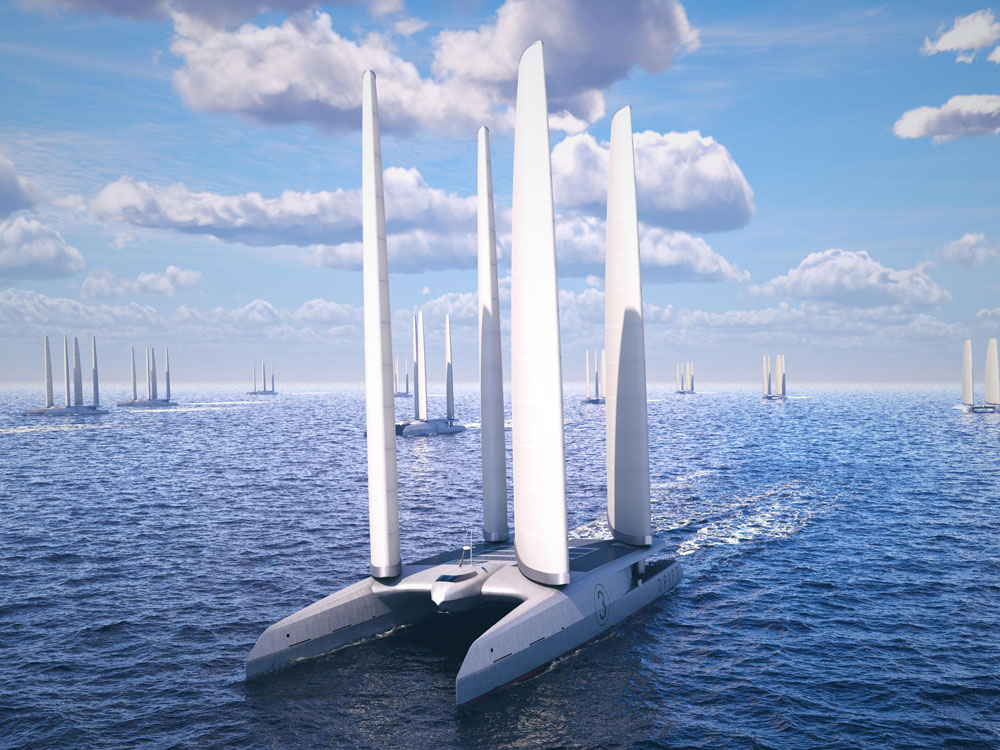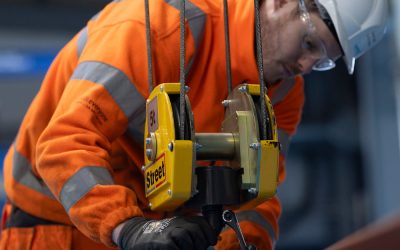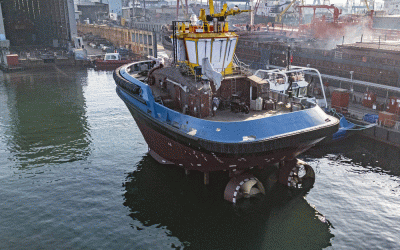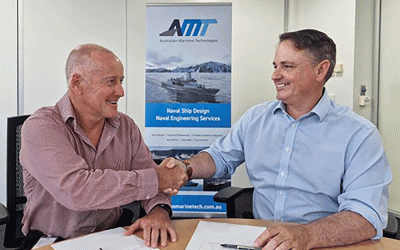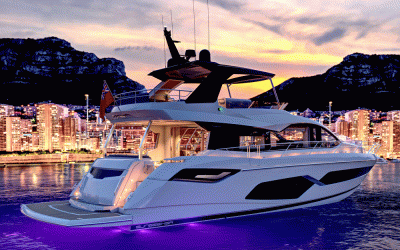You know you’ve hit on an innovative vessel design when you’re not quite sure how to categorise it.
For example, the Most Valuable Yacht (MVY) concept devised by UK start-up DRIFT Energy could be categorised as a hydrogen production and bunkering vessel or, alternatively, as a “green, self-filling tanker” or a “fishing boat for energy”, founder and CEO Ben Medland tells Ship & Boat International. Whatever the handle, Bath-based DRIFT has ambitious plans to push this new design to fulfil an extremely ambitious, critical mission; namely, “to abate a gigatonne of CO2 by 2050 by having a flotilla of MVYs on every ocean”, Medland predicts.
The MVY is a 58m sailing catamaran, intended to work along the same lines as a mobile floating wind turbine: it captures deep-ocean wind and uses it to produce green hydrogen (generated by using only renewable energy sources, without fossil fuels) while at sea. The MVY then sets sail to deliver its home-brewed hydrogen – not just to maritime and offshore operators, but to heavy industry located close to ports, as well as small island communities in hard-to-reach locations.
“We go where the action is, while other renewable energy-capturing devices stand still and wait,” says Medland. “We’re the world’s first mobile renewable energy class – the MVY is what happens to a floating offshore wind turbine when you get rid of the anchor and go free-range.”
The MVY is fitted with a sail system, used to propel the vessel forward. As the boat moves through the water, it turns a turbine beneath the waterline – similar to a hydrogenator on a yacht – which converts the kinetic energy into the electric energy required to feed the MVY’s onboard megawatt-electrolyser. The process of electrolysis then splits water into hydrogen and oxygen. While wind power serves as the MVY’s ‘fuel’, solar panels harvest additional clean energy for the boat’s batteries, powering the onboard air-con and other hotel load components.
Each hull will essentially serve as the MVY’s ‘production plant’. Medland adds: “We went down the catamaran route as it created extra space for storing hydrogen, and it also creates the righting moment and seakeeping abilities to generate the performance that’s required from the boat.” In its current form, the boat will have the capacity to store up to 4tonnes of hydrogen and to produce between 2-3tonnes of hydrogen every seven days, adding up to approximately 150tonnes per year, depending on season, location and the needs of the customer.
The latter can vary wildly, depending on whether the customer’s requirement relates to heavy industry, grid power or marine transportation. “For example, one customer may want fuel cell-grade hydrogen; another may want lesser-grade hydrogen for combustion; they may want higher or lower pressures,” Medland says. “Through modular, scalable design, we can produce a vessel that fits a broad range of those use cases, while the final fit-out can be modified to be customer-specific.”
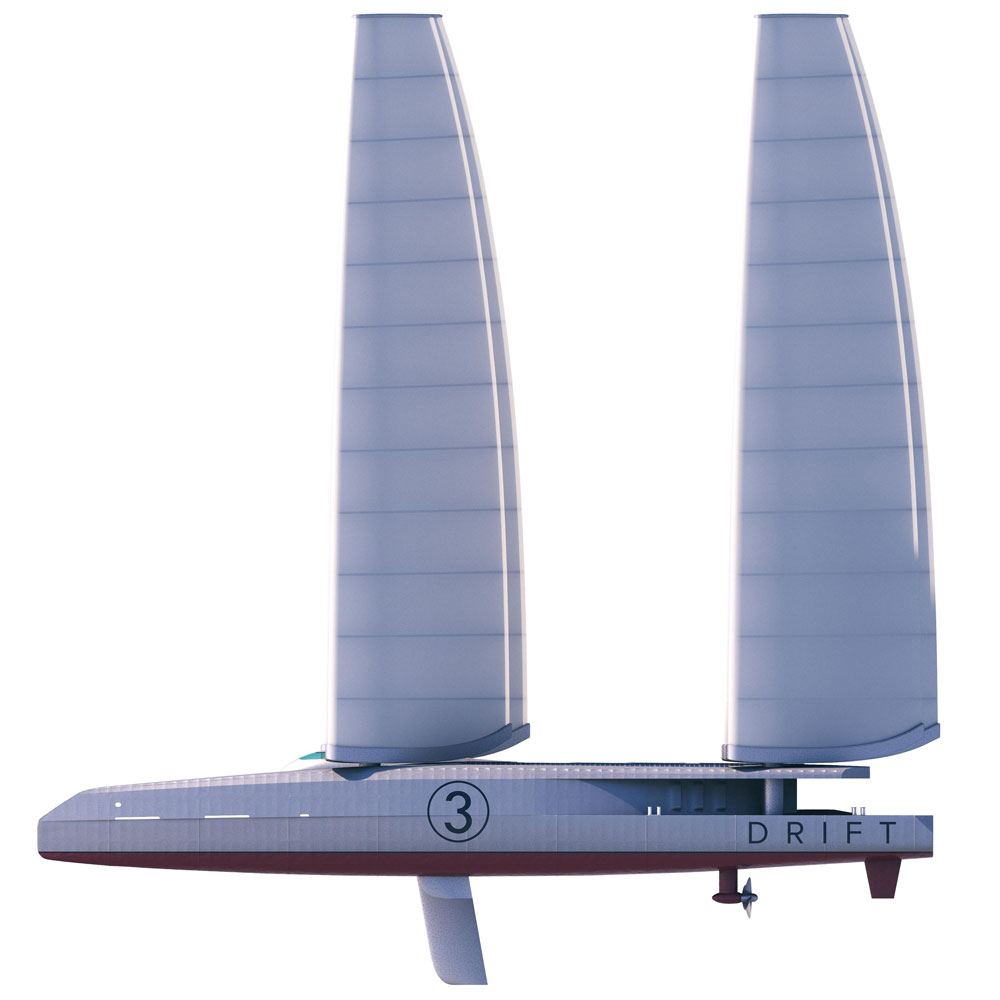
A combination of sails and underwater turbine generate the power to undertake onboard electrolysis
While the MVY concept looks impressive, there’s some equally spectacular technical innovation taking place out of sight. As Medland puts it: “The digital and physical sides of the business are intertwined.” Working in collaboration with London-based Faculty AI, DRIFT has developed what it calls the ‘Goldilocks algorithm’. This algorithm is designed to hunt for optimum weather conditions, to ensure that the boat plots routes into zones where it can harvest the right amount of wind energy, instead of randomly floating around during a lull or automatically ‘chasing the wind’ when a more efficient option is available.
“It enables the boat to strategically assess options and make sure we’re not sacrificing near-term gains for long-term performance,” Medland adds. “The algorithm plays off those different trade-offs between generating where to go to find the right weather. Using that info, we feed that back into the vessel and figure out what we can achieve in terms of power output.” This also benefits the overall boat design process, helping the DRIFT team – including Neal Pawson, head of vessel programme, and Mike Mackay, head of vessel design – to fine-tune future generations of the MVY.
DRIFT’s goal is for the MVYs to operate autonomously. “Step one is that we make the boats remotely operable,” says Medland, “and then, over time, as the regulations and technology improve, we get to a place where full autonomy is more of an option. But for the first fleets, we envisage a crew: things happen at sea, so having a crew on board to monitor or take control of the boat, and to understand and learn about this unique vessel type, is going to be important. Also, we don’t want to have to wait for autonomous technology to catch up with what we’re building.”
For now, the MVY remains a work in progress, with DRIFT working alongside class societies to determine the boat’s technical particulars and crew complement. However, Medland stresses, the MVY is far from being a ‘one-boat project’. “This isn’t a project; it’s a business,” he says. The aim is to launch flotillas comprising literally “hundreds, if not thousands” of MYVs delivering hydrogen to all four corners of the globe: a coastal and offshore network with the potential to become as synonymous with global green energy production as the world’s 341,000-and-counting wind turbines.
Medland adds that the group is currently in confidential talks with international yards. “We envisage the yards building the boats on a scale like that of the Liberty-class cargo ships in WW2, where many ships are built in multiple places,” he says. “The yards are very excited about this because, typically, multiple orders for ships sized 24m+ are infrequent.” These newbuilds would not necessarily limit themselves to hydrogen production and storage. “We have plans for vessels that can produce other e-fuels, such as green ammonia and green methanol,” Medland adds. “Green hydrogen currently represents the most fungible commodity, and the easiest to move back to shore, from a cost and technology perspective. We’re fuel-agnostic; the MVY is essentially a platform for renewable energy.”
For the full, in-depth article, check out Ship & Boat International September/October 2024
